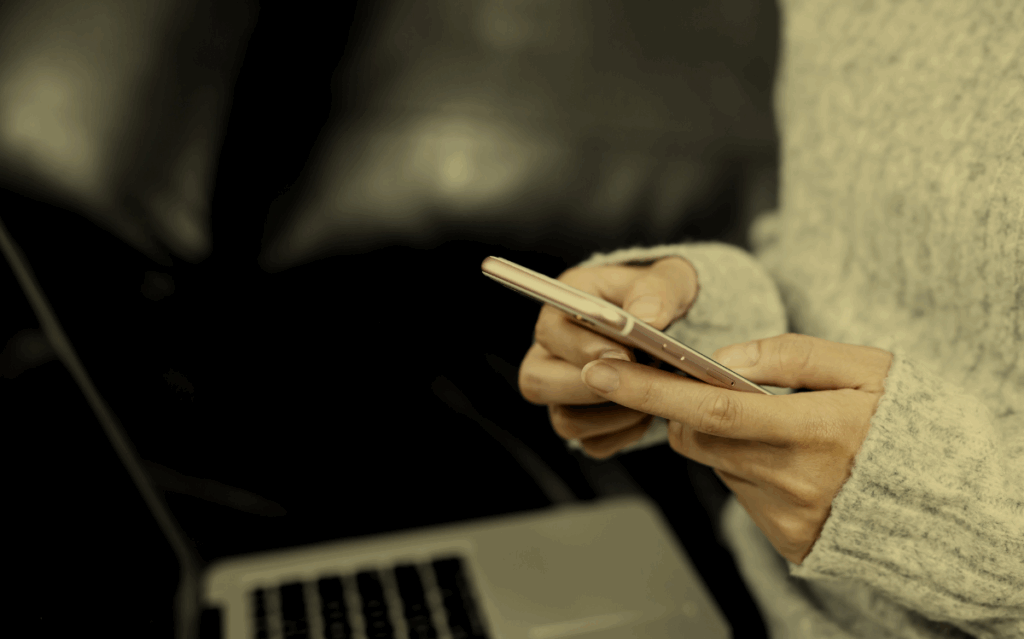The Alabama free phone program gives low-income folks a digital lifeline. Part of federal assistance, it keeps people connected when they need it most.
Qualifying isn’t complicated – you need to be at or below 135% of poverty guidelines or already receive government help like SNAP or Medicaid.
Applications take about 15 minutes online. Providers vary – some offer smartphones with 10GB data, others basic phones with less.
For families struggling to make ends meet, this program might be the connection they can’t afford to lose.
Key Takeaways
- Clear eligibility and documentation requirements streamline your application process.
- Comparing providers and plans ensures you get the best service tailored to your needs.
- Recertification and ongoing support help maintain uninterrupted benefits.
What the Program Offers
Free or discounted monthly phone and internet services
The government doesn’t advertise it much, but there’s this program that hooks up cash-strapped families with basic phone and internet connections without the usual price tag.
Most folks don’t think twice about connectivity until they’re suddenly cut off , no emails from the boss, missed doctor appointment reminders, or that awkward silence when relatives wonder why you’ve gone dark.
Uncle Sam figured out that keeping people connected isn’t just nice , it’s necessary. Qualifying households get talk, text, and sometimes a chunk of data (usually around 4.5GB) without opening their wallets or at least paying significantly less than market rates. [1]
Access to smartphones, including Samsung models
Sign up and you’ll likely score a smartphone too. Nothing cutting-edge with five cameras and folding screens, but solid Samsung A-series models and similar mid-range devices make the cut.
Some providers literally hand out free phones (typically valued between $100-250) to approved applicants , a genuine lifesaver for anyone whose budget has “new phone” somewhere below “groceries” and “keeping the lights on.” Already have a device? The program might still cover an upgrade or replacement if that ancient iPhone finally gives up the ghost.
Coverage across urban and rural areas in Alabama
From Birmingham’s busy streets to the quietest corners near Mobile Bay, this program tries to reach everyone. Coverage maps stretch across the state, with providers patching holes in rural areas where they can. This isn’t some city-dwellers-only deal.
The whole point is making sure the person living down that long dirt road or in that tiny unincorporated community has a reliable signal when they need to call for help, check email, or just feel connected to the wider world.
Eligibility Criteria
Income-based eligibility
Household income at or below 135-200% of Federal Poverty Guidelines
“Do I qualify?” That’s what everyone wants to know first. The answer hinges mostly on what shows up in their bank account each month or if they’re already getting help from other government programs. Household income needs to stay under a certain threshold , somewhere between 135% and 200% of whatever the feds currently call “poverty level.”
For a family of four, that translates to roughly $55,000 per year (as of 2023). The system works like a sliding scale, so the further below that number someone falls, the more likely they’ll get approved. A single person might qualify with income around $27,000, while larger families get more wiggle room. [2]
Proof of income (tax returns, pay stubs, benefit statements)
Nobody takes anyone’s word for it anymore. Applicants need paperwork , the kind nobody enjoys gathering. Recent tax returns work best (last year’s 1040 form), but three months of pay stubs can do the trick too. Getting benefits already? Those approval letters from SNAP, Medicaid, or SSI basically serve as golden tickets.
Some folks get by with a signed letter from their social worker or the housing authority. Smart applicants collect these documents before starting the application.
Nothing kills momentum faster than hunting for last month’s electric bill while the application times out. Most providers accept digital copies (PDFs or clear photos), but some still insist on faxed or mailed originals , because apparently it’s still 1997 somewhere.
Program participation

Enrollment in qualifying assistance programs (SNAP, Medicaid, SSI, WIC, etc.)
Many qualifying households are already enrolled in programs like SNAP, Medicaid, or WIC. These serve as proof of eligibility. If a person is on food stamps or getting Supplemental Security Income, they automatically meet the criteria for the Lifeline program. The providers verify this through government databases or with documentation submitted during the application.
Verification through government databases or documentation
The verification process often involves a third party called the National Verifier. They check whether someone is enrolled in a qualifying program or meets the income limits. Sometimes, a provider might ask for additional documents if the verification doesn’t go smoothly.
Special considerations
Indian Reservations and tribal programs (e.g., Bureau of Indian Affairs, Tribal-Administered Assistance)
Native Americans living on reservations or tribal lands might have extra options. The program recognizes tribal-specific assistance programs, like those managed by the Bureau of Indian Affairs. Residents on reservations might also qualify for additional benefits or special programs.
Eligibility for low-income households on tribal lands
Low-income families on tribal lands often face unique barriers to connectivity. The program aims to address this by working with tribal agencies to extend coverage and provide tailored support.
Application Process
How to apply
Online via Lifeline Verification Portal or provider websites
Most applicants find it easiest to apply online. The Lifeline Verification Portal or provider websites walk users through filling out forms, uploading documents, and submitting their info. The process is straightforward, but it’s crucial to follow each step carefully.
By mail with paper forms and documentation
Some prefer to send applications by mail, especially if they have trouble with internet access. They need to print forms, fill them out, and include copies of proof documents. Mailing applications takes longer but remains an option.
Required documentation
Proof of income or program participation
Applicants need to show proof of their income or enrollment in qualifying programs. This could be a recent tax return, benefit award letter, or a statement from a social service agency.
Identification documents
A driver’s license, state ID, or birth certificate may be required to confirm identity. Some providers ask for proof of residence as well.
Verification & approval
Role of National Verifier and provider review
Once an application is submitted, the National Verifier checks eligibility. They look at income, program participation, and other factors. The provider then reviews the approval or denial. It’s common for this process to take a few days to a couple of weeks.
Common verification issues and remedies
Sometimes, documents don’t match or verification fails. The solution involves resubmitting clearer proof or clarifying details. It’s helpful to keep copies of all documents and follow up with customer support if needed.
Recertification
Annual renewal process
Benefits are not forever. Recertification happens every year. Applicants need to confirm their eligibility again, often by submitting updated proof of income or program enrollment.
Tips for smooth recertification to prevent benefit loss
To keep benefits, stay organized. Mark renewal dates on a calendar. Gather necessary documents early. Some providers send reminders. It’s better to recertify early rather than risk losing service.
Choosing the Right Provider & Plan
Major providers operating in Alabama
Cliq Mobile, Assurance Wireless, TruConnect, SafeLink Wireless, AirTalk Wireless
These companies dominate the Lifeline landscape in Alabama. Each has different plans, devices, and coverage areas. Comparing them helps find the best fit.
Plan features
Talk, text, and data options
Most plans include unlimited talk and text, with data allowances that vary. Some plans offer only a limited amount of data, while others include more or even unlimited data.
Device offerings and upgrade policies
Providers generally offer basic smartphones, with options to upgrade or replace devices under certain conditions. Some even give away free phones when you sign up.
Internet services and add-ons
In addition to phone plans, some providers offer internet service bundles or add-ons like mobile hotspots, expanding options for those needing more connectivity.
Comparing plans
Coverage in your area
Before choosing, check if the provider covers your ZIP code. Service quality varies depending on location, especially in rural areas.
Device compatibility and models
Ensure your current or desired device is compatible with the plan. Some providers have restrictions or specific device requirements.
Cost and benefit differences
While most Lifeline plans are inexpensive or free, some offer more data or better phones for slightly higher costs. Weigh what matters most, data, device quality, or coverage.
Special programs and discounts
Affordable Connectivity Program (ACP)
This program offers extra discounts on internet bills and sometimes free devices. Many Lifeline providers also participate, giving users a chance to get more for less.
Device upgrade opportunities & policies
Some providers allow regular upgrades or replacements, especially if a device breaks or becomes outdated. It’s worth asking about upgrade policies when signing up.
Application & Verification Tips
Preparing application documents
Proof of income (tax returns, benefit letters)
Gather recent tax returns, pay stubs, or benefits statements. Make sure they are current, usually within the last 30 to 60 days.
Enrollment verification for assistance programs
Get official letters or enrollment certificates. If you’re already on SNAP, Medicaid, or SSI, those documents serve as proof.
Navigating the online application
Step-by-step guidance
Follow the prompts carefully. Fill in personal details, upload documents, and review before submitting. Keep copies of everything you upload.
Common pitfalls and how to avoid them
Double-check the accuracy of your info. Poor-quality scans or missing pages can delay approval. Don’t skip questions, especially regarding eligibility.
Ensuring continued benefits
Recertification procedures
Set reminders for renewal dates. Keep your documents updated. Some providers send notifications when it’s time to recertify.
Using online portals and customer support
Most providers have websites or customer service lines. Use these to check your status, update info, or ask questions. It’s better to be proactive.
Additional Resources & Support
Local assistance options
Alabama state agencies and tribal offices
Local agencies often help with applications or provide additional support. Contact your county social services or tribal offices for help.
Community outreach programs
Some organizations run outreach events, helping residents fill out forms or providing internet access to complete applications.
Customer service and troubleshooting
Contact channels for providers
Most providers have toll-free numbers, online chat, and email support. Keep these handy in case issues arise.
FAQs on device returns, upgrades, and coverage
Check provider websites for FAQs. Many common questions are answered there, saving time.
Maximizing program benefits
Combining Lifeline with ACP for maximum discounts
Many users get additional discounts on internet bills and free devices through ACP. Combining these services makes a real difference.
Using phone and internet for healthcare, education, employment
Having reliable access opens doors to telehealth, online classes, and remote work. It’s not just about a phone; it’s about staying connected to opportunities.
FAQ
How does household income influence eligibility for Lifeline service, especially for households on Indian Reservations or enrolled in Tribal programs?
Lifeline eligibility is based on household income, usually at or below 135-200% of federal poverty guidelines. Native American families on Indian Reservations or enrolled in tribal programs like those managed by the Bureau of Indian Affairs may qualify through tribal-specific assistance programs. Income limits are verified with documents like tax returns or benefit letters.
The verification is done via the National Verifier or Lifeline Application Portal. Once confirmed, they’re eligible for Lifeline services, which include free or discounted phone and internet, essential for health, communication, and emergency needs.
What are the steps to prove eligibility for Lifeline benefits if I participate in multiple government assistance programs?
To prove eligibility, applicants must submit documentation such as enrollment letters or benefit award notices from programs like Food Stamps, Medicaid, or Tribal Assistance. Supporting documents include benefit award letters or proof of income like tax returns. These are uploaded through the Lifeline Verification system or the Lifeline Application Portal.
The process involves verifying these documents, often checked by the Universal Service Administrative Company. Once approved, the household qualifies for Lifeline-supported voice, internet, and add-on services. Accurate proof helps prevent delays and ensures continuous access to benefits.
How can residents on tribal lands or Indian Reservations access Lifeline and broadband services without gaps in coverage?
Tribal residents can access Lifeline and broadband through providers that support tribal programs, often with special discounts or device options. Verification involves confirming tribal residency via ID or enrollment documents. Providers like American Broadband & Telecom or Cricket Communications offer devices, higher data plans, and reliable internet in rural areas.
Ensuring the provider supports the Broadband Program Rules and nationwide coverage helps prevent gaps. Once enrolled, users can enjoy consistent phone and internet services, which are vital for health care, education, and emergencies on remote or tribal lands.
What is the process for switching service providers while maintaining Lifeline benefits, and how does the household rule affect this?
Switching providers involves applying through the new provider’s online form or Lifeline Verification system. The benefit transfers from the old to the new provider, but only one household benefit is allowed. The National Verifier tracks household benefits to prevent multiple claims. It’s important to inform your current provider about the switch to avoid service gaps.
The transfer usually takes a few days, and once completed, your household continues receiving Lifeline-supported services without interruption, as long as annual recertification is maintained.
How do Lifeline-supported devices and add-on services work, and what options are available for eligible consumers?
Lifeline offers basic mobile phones and smartphones, with some providers supporting device upgrade options. Devices vary by provider, and there are policies for returning or upgrading devices after a certain period. Add-on services like video streaming or extra data can be purchased separately but may not be included in the core benefit.
Eligible consumers can choose plans with more data or internet access, supporting telehealth, online education, and remote work. Checking with your provider about upgrade options and available add-ons helps maximize your Lifeline benefits within household limits.
Conclusion
Getting a free government phone is a straightforward process that can significantly improve your ability to stay connected with loved ones, healthcare providers, and job opportunities. By verifying your eligibility and submitting a simple application, you could have a phone shipped directly to your home at no cost.
Don’t wait, take advantage of this support today. Click here to start your application now: Apply for Your Free Government Phone. Staying connected has never been easier or more essential.
References
- https://www.fcc.gov/general/lifeline-program-low-income-consumers
- http://aspe.hhs.gov/topics/poverty-economic-mobility/poverty-guidelines


